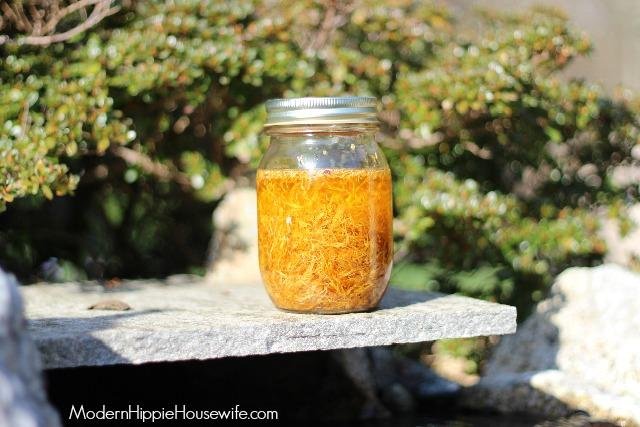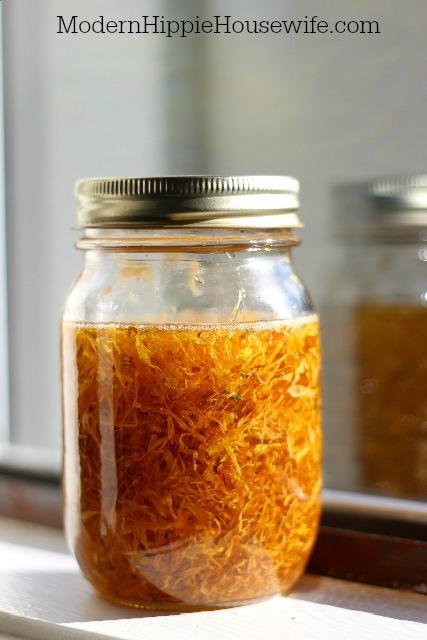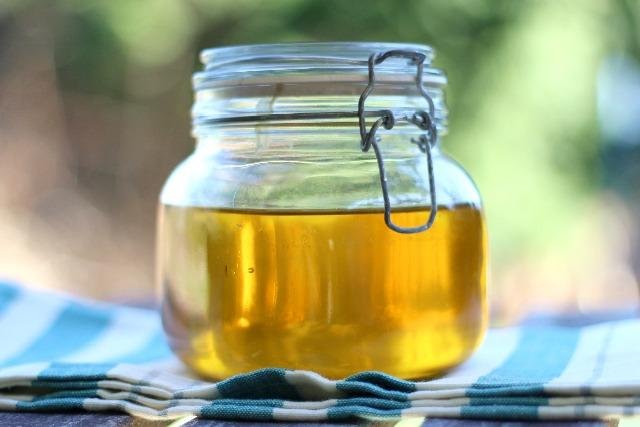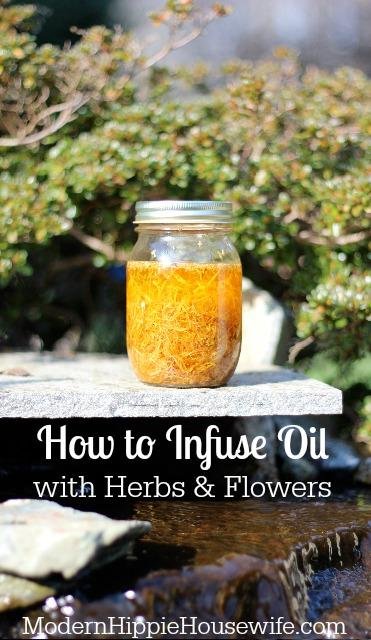How to Infuse Oil with Herbs and Flowers

This post contains affiliate links. I make a small commission on products purchased through the links on this site in order to promote my blogging practice, however, this does not affect the price for you. I would never promote something that I wouldn't use myself.
If you walk in to my kitchen, 365 days of the year, you will find some sort of dried herb or flower petal infusing in oil on my counter or window sill. Infusing your herbs with oil is a great way to utilize and preserve herbs and flowers while they're in abundance in the summer, and the oil comes in handy for so many things!I use lavender and wild rose infused oil for lip balms and face creams; oregano, rosemary and sun-dried tomato infused oil for cooking; and rose hip, calendula, comfrey, yarrow and plantain infused oil for various healing salves and creams.Just recently, I've started using calendula oil in my homemade eczema relief cream, which, come next week, I'll be sharing the recipe for! But before I can do that, I first need to share with you how to infuse oil with herbs using the solar and slow-cooker methods.Both methods will yield the same end result, however, the solar method takes about 2-6 weeks (or more for a more potent oil) and the slow-cooker method, in comparison, takes about 10-12 hours.The time of year and my patience level determines which method I use. As it's name suggests, the "solar" method uses the sun, so you can guarantee that, come summer, I'll have a window sill lined with herb and oil-filled mason jars. However, on the west coast of B.C., sun is rather hard to come by during the winter months, and I mainly rely on the slow-cooker method.Before combining the oil and herbs, it's important that you first dry the plant you're using completely, or at the very least, wilt them. This will insure that there is little to no moisture in the oil, which could potentially lead to the oil going rancid or molding because water is a breeding ground for bacteria. Learn How to Dry your Herbs and Flowers here!Oils which work well for infusing, and which I've used, are olive, grape seed, sweet almond, sunflower, castor, jojoba, and avocado oil. Coconut oil will not work unless it remains in a constant, liquid state. Each oil holds different beneficial properties of it's own, so thoughtfully choose. Here is a great article that distinguishes different carrier oils
Infusing Herbs Using the Solar Method
There’s something so much more magical and healing about the sun infusing oils, as opposed to the slow-cooker method. I know I sound like a total non-modern hippie when I say that, but it's true! This is why it's my go-to method come the summer months. To infuse oils via the solar method:
- Fill a mason jar with desired, dried, herbs or flowers. (Read this)
- Cover the herbs with carrier oil of choice, e.g., olive, grape seed, almond, jojoba.
- Leave to infuse on a sunny window sill for 2-6 weeks.
- Shake occasionally to agitate.
- Using a very fine sieve or nylon stocking, strain the infusion, making sure to squeeze every last drop of precious oil out of the herbs and petals!
- Store the oil in a cool dark place.
DIY doesn't get any easier this!
Infusing Herbs Using the Slow Cooker Method
If you're lacking sun, or eager to use your infused oil, then the slow cooker infusion method really comes in handy.To infuse oils via the slow cooker method:
- Fill a mason jar with desired, dried, herbs or flowers. (Read this)
- Cover the herbs with carrier oil of choice. e.g., olive, grape seed almond, jojoba.
- Place the jars in the slow cooker with a tea towel lined on the bottom (this will prevent them from moving around.)
- Fill the slow cooker half full with water so that the mason jars are about 3/4 covered.
- Turn the slow cooker on low heat and leave to infuse for 10-12 hours.
- Using a very fine sieve or nylon stocking, strain the infusion, making sure to squeeze every last drop of precious oil out of the herbs and petals!
- Store the oil in a cool dark place.
Use your infused oils for homemade balms and salves, cooking, and lotions!

